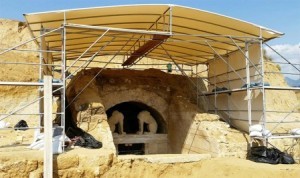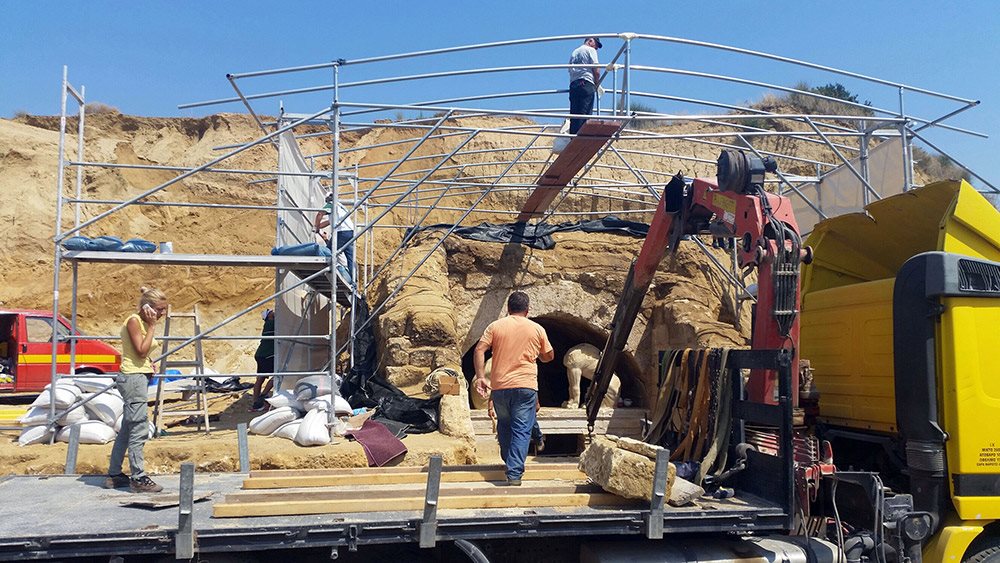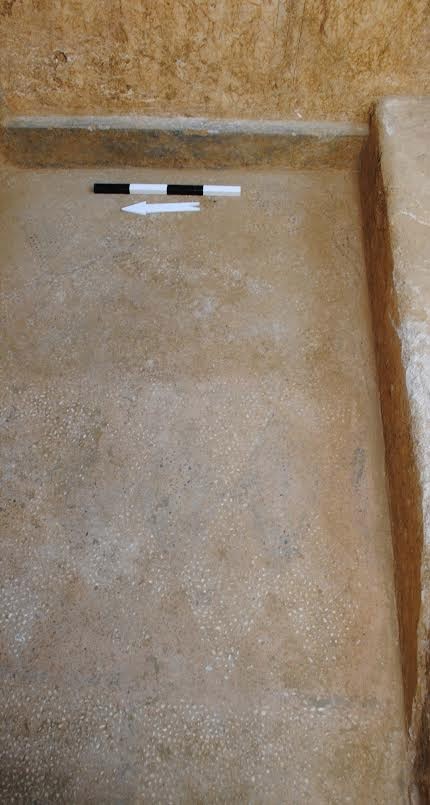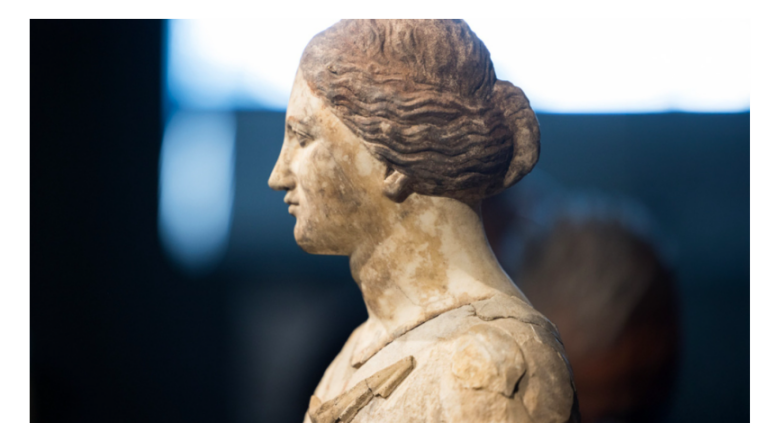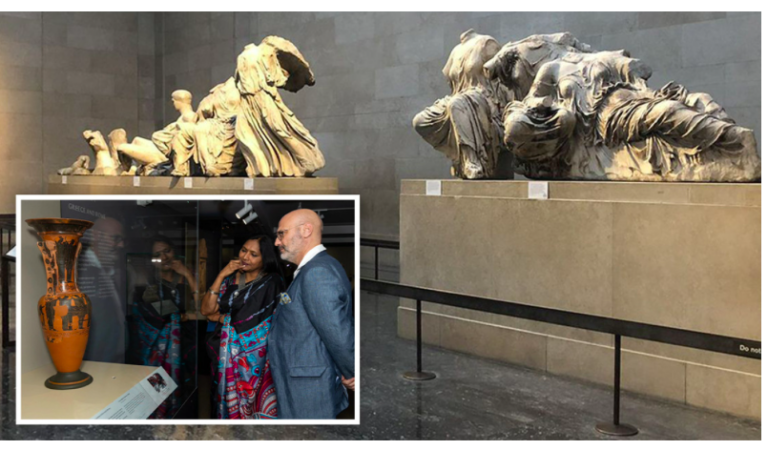The excavation at the burial mound at ancient Amphipolis has gripped so much worldwide attention that archaeologists at the site have asked politicians and the press seeking guided tours at the site to leave them in peace. Information is coming out in press releases and photos by the Ministry of Culture and caution is being exercised even though wild speculation is mounting as experts and non-experts alike have added their own theories about the contents of the large 4th Century B.C. tomb that may contain rich treasures from the expedition of Alexander the Great or bones from a very important person in antiquity.
Rumors of plundering
A handout photo released by the Greek Culture Ministry on Monday shows an inner marble wall inside the antechamber of the tomb that has a hole in the top-left hand corner of the wall. This has caused many to believe that there was forced entry and that the barrel-vaulted tomb may have been plundered hundreds of years ago,
Historians working at the site have not made an official statement as to whether the site has been plundered. On the contrary, lead archaeologist Katerina Peristeri said on the weekend that the grave was unlikely to have been violated as many mechanisms were in force to protect it, however rumors have yet to quell.
Right from the outset, nearby villagers from Amphipolis and Mesolakia said that there were peculiar goings-on with the region traditionally attracting many smugglers. The police have made dozens of arrests in the area and there was the case of an elaborate gold funerary wreath allegedly found by a farmer in the early Nineties and sold to the J. Paul Getty Museum in Los Angeles for $1.15 million. The wreath was returned to Greece in 2007 after a 10-year legal battle.

Could this treasure that the Getty Museum returned to Greece have been looted from the ancient tomb?
Part of the stone wall that blocked off the subterranean entrance is missing and the sphinxes lacked heads and wings. The Lion of Amphipolis that originally stood at the top of the mound had also been removed in antiquity showing that the site had been severely damaged.
Prominent Greek historian Sarantis Kargakos joined his voice to others by stating that the tomb has been looted in the past during an interview with Antenna TV. “At the spot where Ancient Amphipolis is found, a village named Neochorion, where Bulgarians used to live was destroyed in 1941-1944,” he said. “The residents destroyed 20% of their homes, while it is possible that at the same time they looted the tomb, by digging a hole near the Lion of Amphipolis. Another scenario is that the tomb was looted by French officers found in the area during World War I, who used the stones found around the ancient tomb to build their ramparts.”
He said that some of the looted antiquities may have been featured in an exhibit, titled “In the kingdom of Alexander the Great-Ancient Macedonia”, at The Louvre in Paris three years ago. “Where did they get what they claimed to be Ancient Macedonian artifacts at their exhibit?” asked Kargakos. (To see artifacts that had been on display during this exhibition CLICK HERE)
The excavation proceeds
Latest findings by the Ministry of Culture on Tuesday revealed part of a pebbled mosaic floor at the entrance to the monument after the last register of the wall protecting the entrance of the tomb was removed. The design contains quadrilateral shapes surrounded by black and white diamond shapes. The bottom of facade has traces of blue that is also visible on the side walls.
A temporary cover of the excavated part was completed on Tuesday to protect the team of experts from the harsh weather conditions. The team includes a civil engineer, an architect, a geotechnical engineer, a surveyor, a conservator and a geologists. Lead archaeologist Katerina Peristeri is coordinating this team and they are especially committed to protect the monument from the rain and preserve the findings, especially the frescoes.
See the video –
Ask me anything
Explore related questions
